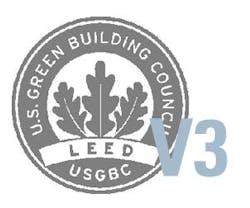Buildings Seeking LEED® Certification to Provide Performance Data
“Today there is all too often a disconnect, or performance gap, between the energy modeling done during the design phase and what actually happens during daily operation after the building is constructed,” says Scot Horst, senior vice president of LEED at the U.S. Green Building Council (USGBC). “We’re convinced that ongoing monitoring and reporting of data is the single best way to drive higher building performance because it will bring to light external issues such as occupant behavior or unanticipated building usage patterns, all key factors that influence performance.”
This is why the USGBC has mandated that as part of LEED v3, the latest version of the organization’s program for green building design, construction, and operations and maintenance, buildings seeking LEED certification must begin submitting operational performance data on a recurring basis as a precondition to certification. USGBC will use the collected performance data to inform future versions of LEED.
“Building performance will guide LEED’s evolution,” says Brendan Owens, vice president of LEED technical development at USGBC. “This data will show us what strategies work – and which don’t – so we can evolve the credits and prerequisites informed by lessons learned.”
Buildings can comply with the performance reporting requirement by being recertified on a two-year cycle using LEED for Existing Buildings: Operations & Maintenance, providing energy and water usage data on an ongoing annual basis, or by having the building owner sign a release that authorizes USGBC to access the building’s water and energy usage data directly from the building’s utility provider. Owners and operators can use the data stream created by this requirement to optimize their building performance and promote the establishment of energy efficiency goals over the building’s life.
“It will also help us to educate building owners on how users of the building can impact its energy use and water consumption, to be sure the building is operating as it was designed to,” says Horst of the new requirement. “Similar to the sticker on a new car that says the car will get 30 miles to the gallon – the car is calibrated to perform but it’s also reliant on the driver’s habits.”
Horst says that this new reporting requirement helps with LEED’s goal of reducing the impacts of the built environment, and that it is important to also recognize that the day-to-day running of the building can dramatically impact its performance. “We know that buildings can be a huge part of the solution for reducing greenhouse gas emissions and fossil fuel dependence,” says Horst. “And, USGBC sees this as one more step forward in accomplishing its goals for addressing climate change.”
